Elliott State Forest 3
Do you have any thoughts on this post?
Here’s what we can learn from the four-year battle for these public lands and our outdoor recreation access
Earlier this month, Oregon legislators passed measures that will finally keep the Elliott State Forest in public hands and off the auction block. This ends a long drawn-out battle that highlights the major differences between America’s public lands and state-managed lands in the West.
Though we applaud the final outcome—achieved with the vocal support of Oregon sportsmen and women—it’s important that we look back on this saga to learn what went wrong and how we might be able to avoid this sort of costly risk to our public lands in the future.
Established in 1930, Oregon’s Elliott State Forest is considered one of the best recreation areas on the Oregon coast. Consisting of 82,500 acres of state land that provides unmatched experiences for local hunters, anglers, and wildlife enthusiasts, the Elliott is made up primarily of lands belonging to the state’s Common School Fund, which was created in 1859—the same year Oregon officially became a state.
Common School Fund lands are used to generate revenue to benefit Oregon’s public education system, mostly through sustainable timber harvest. So when a place like the Elliott isn’t generating a profit, selling the land outright is one way to salvage the value that remains. Just a few individuals can make this decision for state-held lands, versus federal lands that can only be sold by an act of Congress. This is a very important distinction between state-owned lands and national public lands.
And this is exactly what we saw happening with the Elliott beginning in 2013. As logging restrictions and environmental lawsuits strictly limited timber operations, ownership of the forest became a financial drain—rather than a source of income—for the state. Oregon was forced to consider selling the lands to relieve this burden.
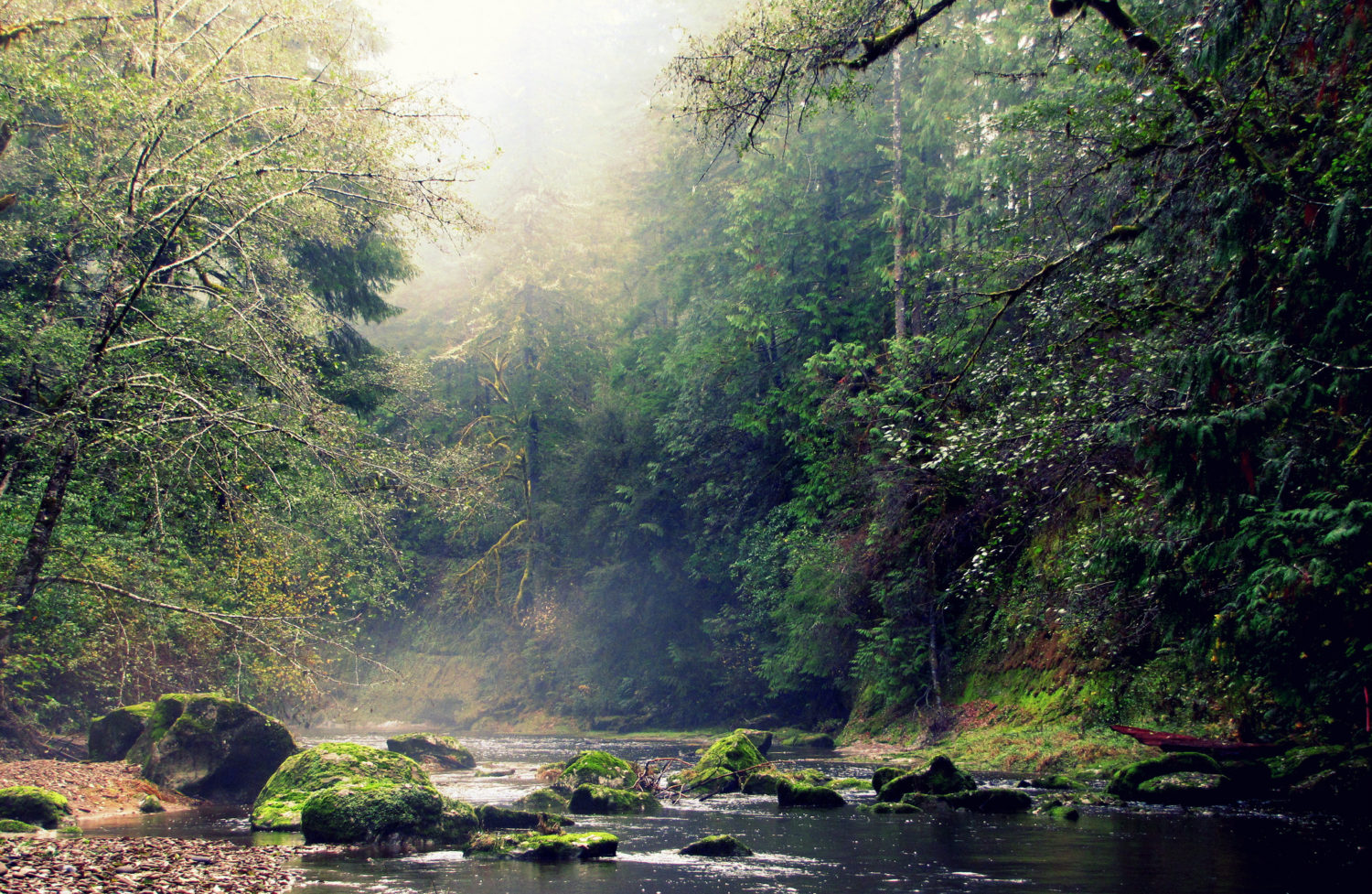
In 2014, the state sold three parcels totaling 1,453 acres and signaled its intent to sell the forest outright two years later. Fair market value was estimated at just $220.8 million, sparking interest from buyers, and earlier this year the state land board approved a potential sale.
Immediately, sportsmen’s groups combined forces and began working to keep the Elliott State Forest public. The pressure from hunters, anglers, hikers, and American families was effective: The state land board voted in May to pursue a plan to retain public ownership of the Elliott.
This month the Oregon Legislature reached a compromise and approved $100 million in state bonding to compensate the Common School Fund for the loss of revenue as a result of preserving conservation and public access to the Elliott. Simultaneously, the state Senate passed a bill to fund and coordinate the transfer of certain trust lands to be managed for the benefit of the Common School Fund.
Finally, an outcome that sportsmen and women can be proud of was reached: Public access and outdoor recreation will continue to thrive, while fiduciary obligations to the Common School Fund will be fulfilled.
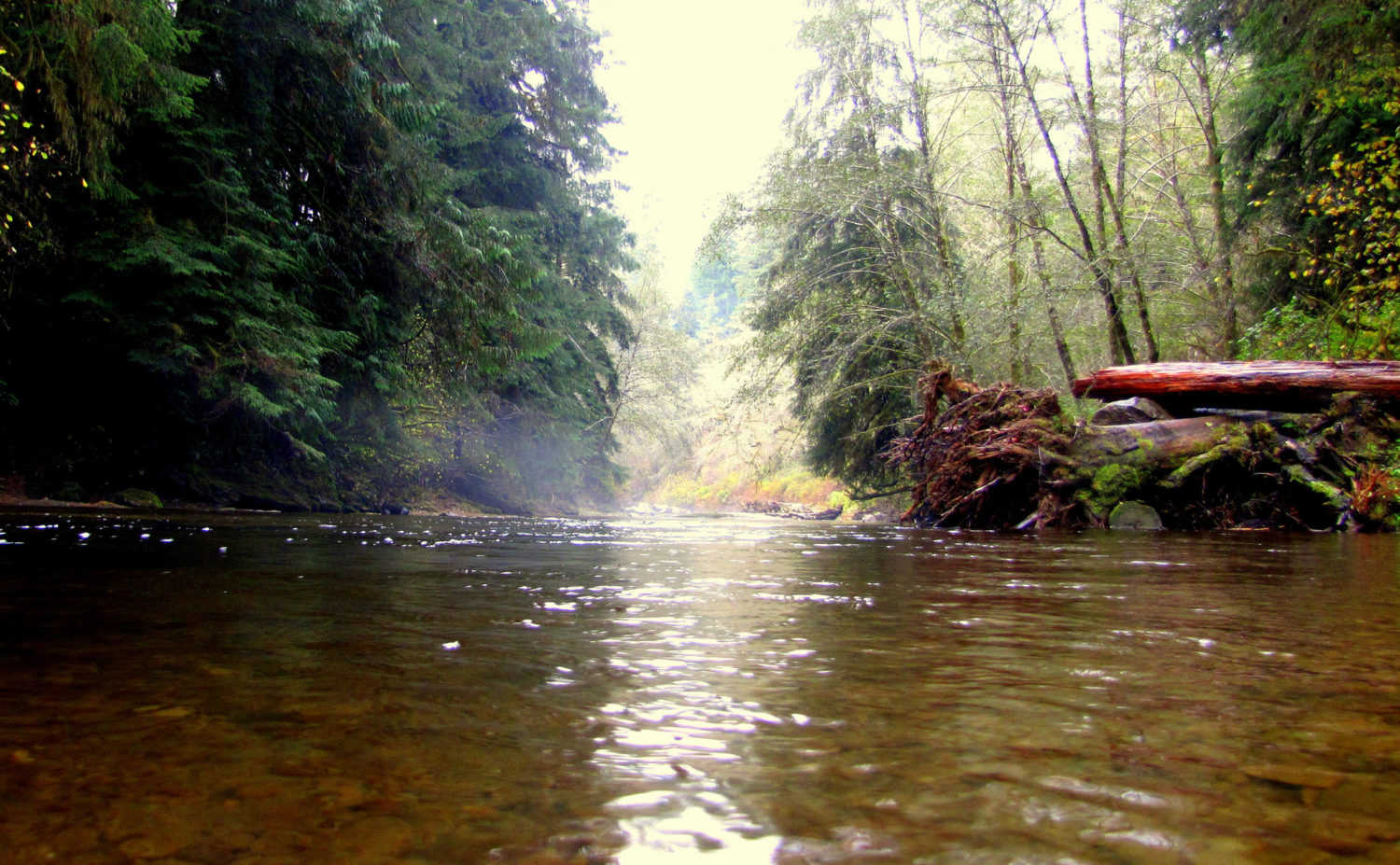
This success sets a clear and positive example: Public lands are important to all Oregonians, and when sportsmen and women unite, we win.
There are some final steps to ensure that the Elliott remains public. The acres that would be purchased to support the school fund need to be clarified and the conservation plans for important habitat need to be fully developed. But the future is much brighter for public lands and our sporting traditions here in Oregon.
Oregon's Elliott will remain public. Here’s what we can learn from the 4-year battle for #publiclands Share on XWhile it’s no longer the poster child for sale or disposal of public lands by a cash-strapped state, the Elliott saga is still a cautionary tale. America’s public lands are a critical part of our national identity and are managed under a multiple-use mandate to prioritize recreation, habitat, grazing, and development—a much different approach than management of state lands in the West.
How Secretary Zinke can help unlock the nation’s only designated wilderness with no public access
Designated in 2009, the 16,030-acre Sabinoso Wilderness, located in San Miguel County, is a remote area in the northeastern portion of New Mexico that is home to a number of game species such as mule deer, Barbary sheep, New Mexico dahl sheep, Rio Grande turkeys, and migratory waterfowl. Yet, right now, the only way sportsmen and others can enjoy the high, narrow mesas and cliff-lined canyons is with permission from a private landowner.
The Sabinoso Wilderness is the only designated wilderness in the country that does not have any public access. We’re just one step away from correcting that, and local hunters are itching to get in this season. Here’s what has to happen.
After more than four years of intensive work by conservation organizations and local sportsmen and women, along with Senators Heinrich and Udall, a private foundation now owns the key to public access—the 4,176-acre Rimrock Rose Ranch.
The ranch lies between the nearest county road and the publicly owned wilderness and cost more than $3 million. The purchase was made with the understanding that the property would be conveyed from the foundation to the American people and the BLM, so that the parcel would eventually become public land, thereby connecting the county road and the Sabinoso. In other words, the private foundation’s generosity would open up more than 4,000 acres of private land as well as 16,000+ acres of landlocked public lands that have belonged to all Americans for nearly a decade.
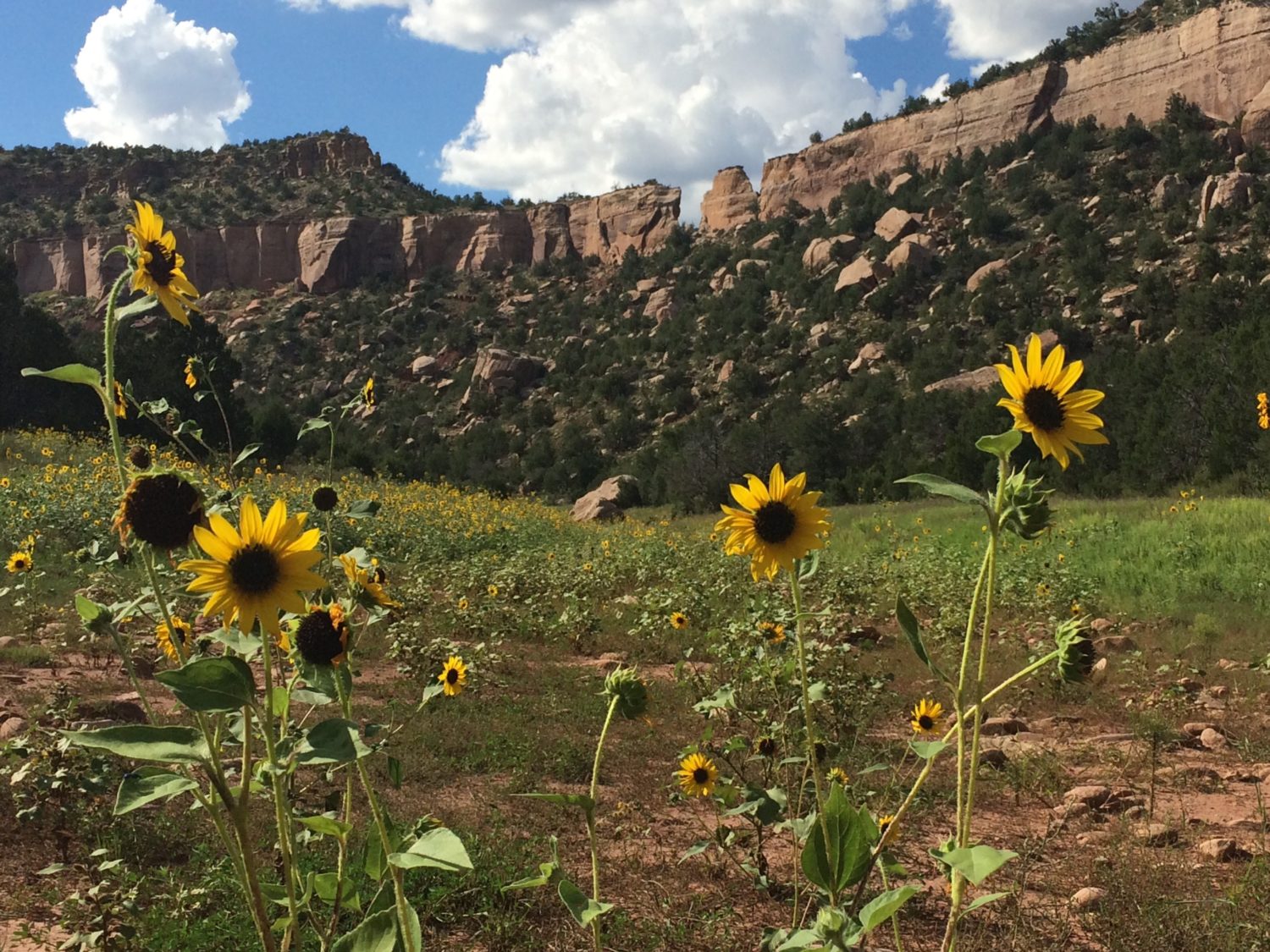
The BLM has completed the evaluation of the wilderness-eligible parcels and is ready to accept the donation. A 60-day congressional review period mandated by the Wilderness Act concluded on March 20, 2017 with no action taken by Congress. So we’ve passed these first hurdles.
The only thing holding up the transaction is Secretary Zinke’s unwillingness to approve it.
The New Mexico State Office of the BLM had completed its realty process (all good there), but then Secretary Zinke instructed the BLM to pause work on the transaction.
Local sportsmen’s organizations have pushed hard for the BLM to complete its work in time to open the area for this fall’s hunting season. Any further delays in the process could endanger that timeline and leave hunters locked out of the area for yet another season. The only holdup now resides with Secretary Zinke’s instructions to pause the process, an order that only the Secretary can rescind, though presumably quite easily.
And if another recent Secretarial order is any indication, Zinke is all for unlocking checkerboard public lands.
In fact, sportsmen across the West are applauding Secretarial Order 3347, in which Secretary Zinke has directed the BLM to identify, inventory, and find all possible ways to provide access onto our public lands that are now landlocked and inaccessible. Here in New Mexico, Zinke has a golden opportunity to put the good intentions of S.O. 3347 into action, making public access to the Sabinoso a shining example of landlocked lands being made available to the public.
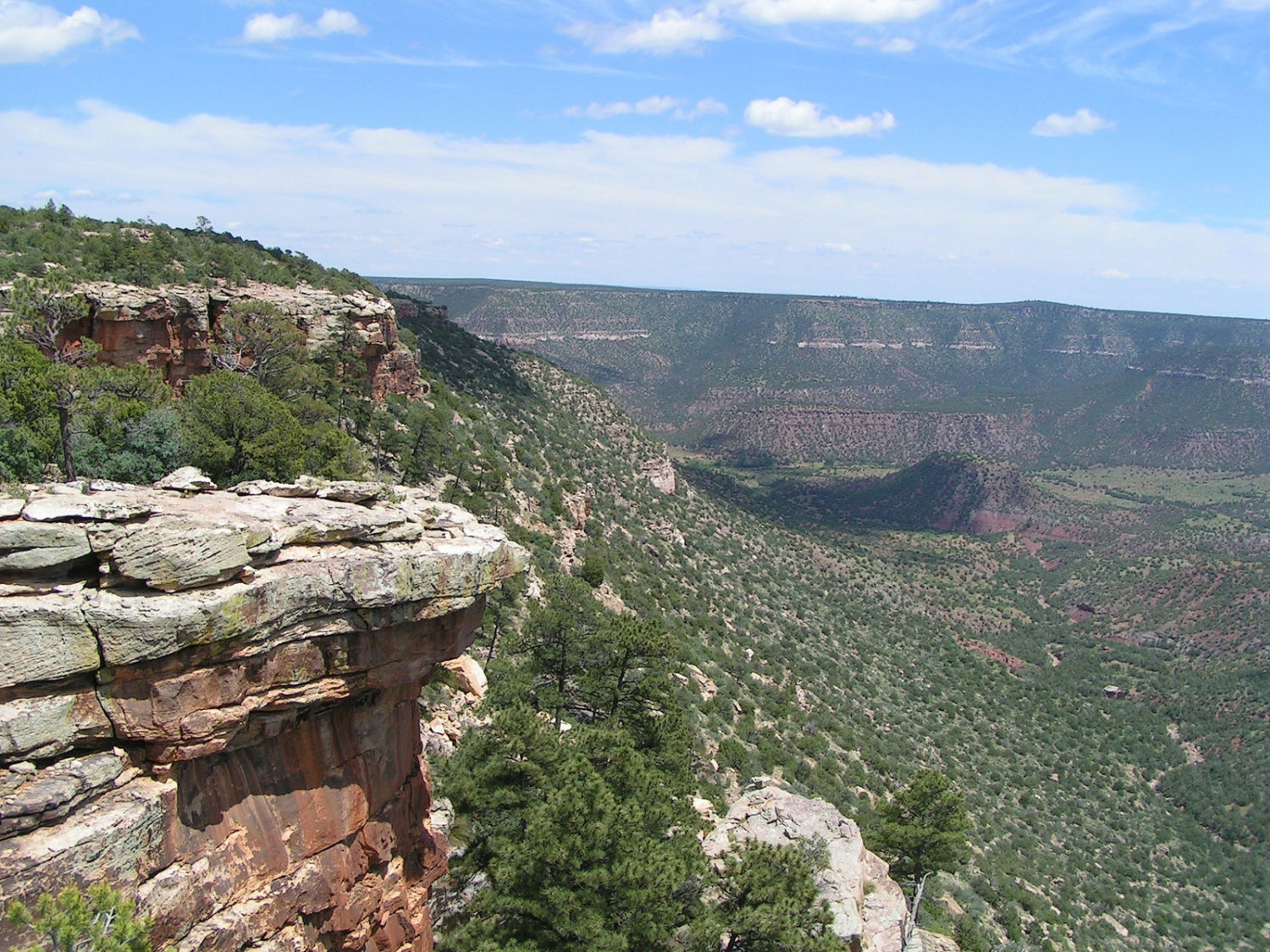
Access to the newly created Sabinoso Wilderness will be an integral part of economic growth locally and regionally, and local leaders have joined the TRCP in asking Secretary Zinke to help see this through.
Stage is set for @Interior to open access to 20,000 acres of landlocked #publiclands; will they? Share on XThe Sabinoso Public Access Plan we are supporting is a once-in-a-generation opportunity to open spectacular hunting and outdoor recreation opportunities to the public for the very first time. Sportsmen, local residents, and small business owners are eagerly awaiting the day that the public can visit this unique landscape.
By completing the final step expeditiously, Secretary Zinke can ensure that this fall will be the Sabinoso’s first hunting season with guaranteed public access, something he has publicly advocated in the past. Now is his chance to stand behind his words and open more than 20,000 total acres of public land to the American people.
Think the Farm Bill doesn’t affect habitat or clean water where you live? Check out these maps
Recently, we highlighted on the blog how the Farm Bill, which may be most familiar to agriculture-minded folks in the Midwest, helps the greater sage grouse, one of our most iconic and imperiled Western game species. It drew attention to the fact that some people might not be aware that the Farm Bill touches down in all corners of the country.
But if we’re going to get Congress to pass a new Farm Bill that helps to guarantee all Americans quality places to hunt and fish, we’ll need every hunter and angler to engage with their elected officials about the programs that matter in the places where they live and spend time outdoors.
One of our goals at TRCP is to educate sportsmen and women on the key conservation provisions of the 1,000-page, trillion-dollar Farm Bill, so we put together a primer on where Farm Bill conservation touches down. Think your area isn’t affected by Farm Bill conservation, because there isn’t eye-high corn in view? Think again.
Congress must write a new #farmbill that helps guarantee Americans quality places to hunt and fish #crpworks #originalconservationists Share on X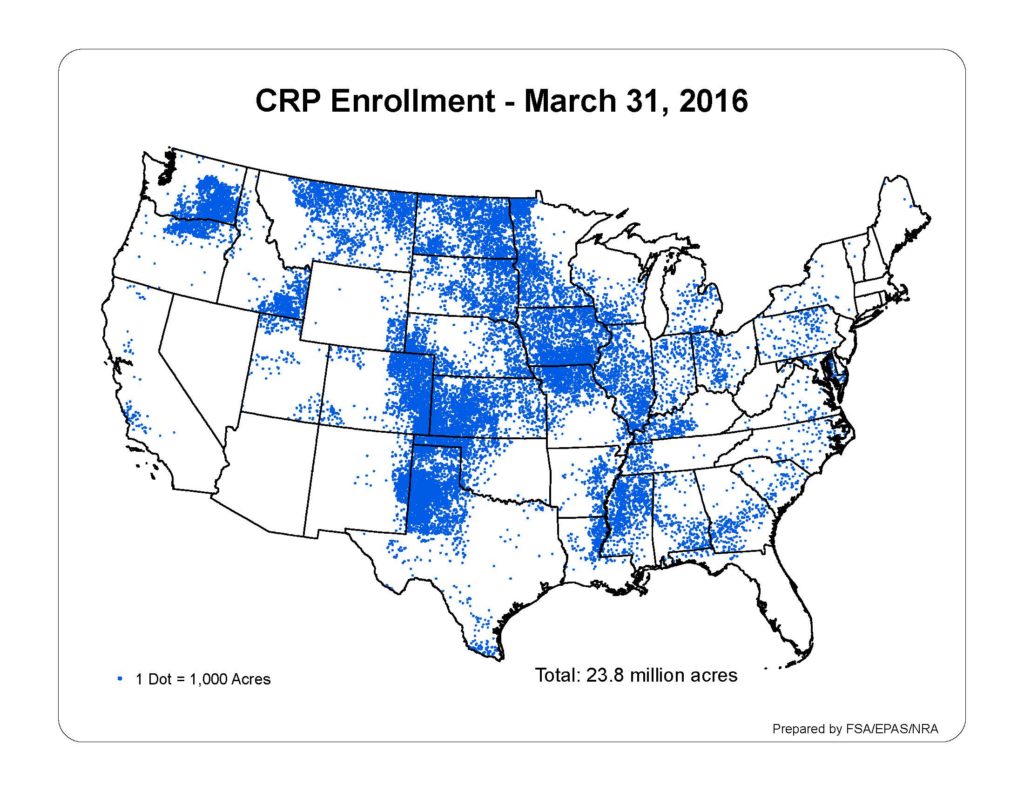
Over the last three decades, it has been proven that the Conservation Reserve Program works for wildlife, water quality, agricultural producers, and sportsmen. You may not be in a major CRP state like Iowa, Kansas, or the Dakotas, but check out whitetail country in Pennsylvania and the major clutch of CRP acres around eastern Washington’s lakes. Your hunting and fishing is benefiting from conservation improvements on private lands wherever you see a dot of blue on this map.
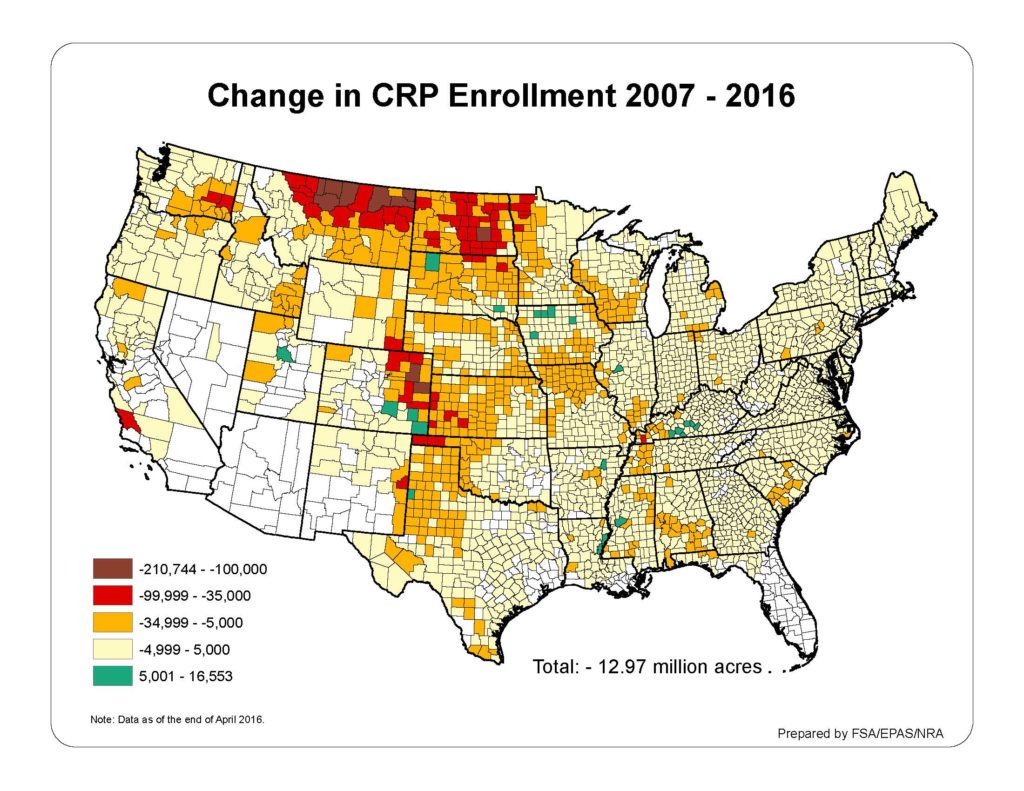
Unfortunately, the current breadth of CRP is far less than we used to have. Is your town on this map, but not the one above? Then you’ve lost CRP’s benefits. Around 2007, crop prices started to rise dramatically, and landowners began to choose crops over habitat—now, nearly 13 million acres of CRP grasslands, wetlands, and forests have disappeared from the landscape, the vast majority of which were lost in hunting strongholds like Montana, North Dakota, and Colorado. If you have a minute, go to our petition at CRPworks.org and tell Congress that you want to see these acres restored to the land.
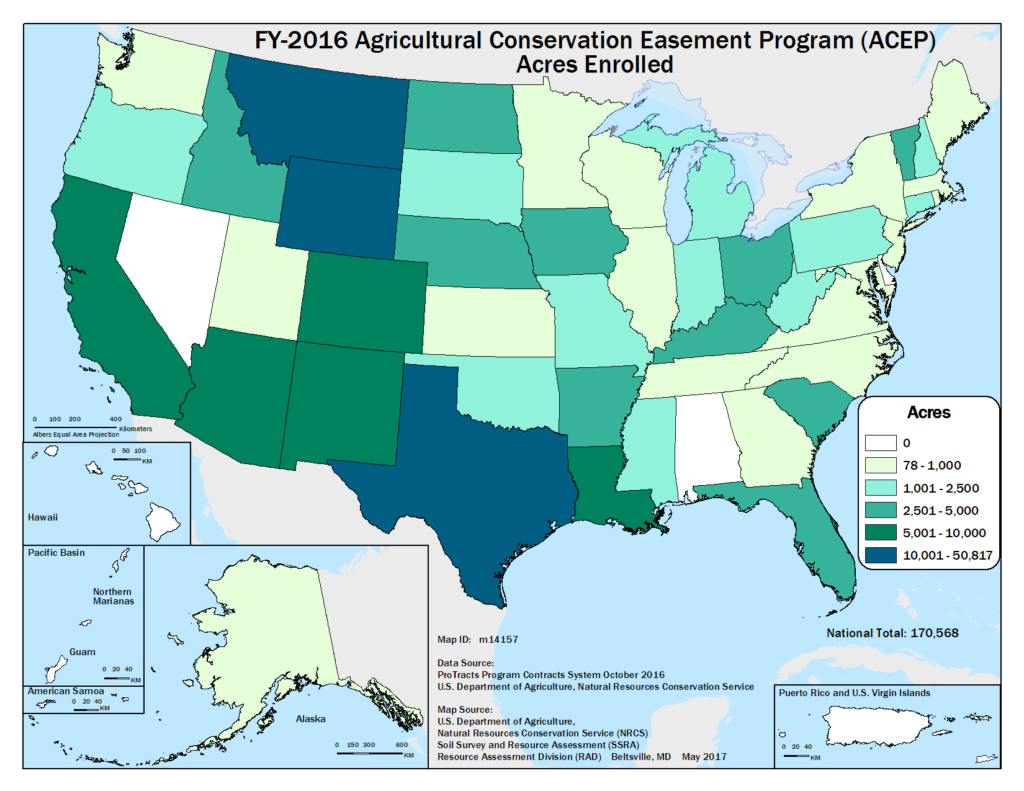
Long-term easement agreements under the Farm Bill’s Agricultural Conservation Easement Program support the voluntary restoration, protection, and enhancement of wetlands and forests, while protecting working agricultural lands from subdivision and development. If your region is on this map, you’re lucky to have easement acres in the mix to benefit critters, water quality, and rural areas. For instance, states like Texas, Wyoming, and Montana are leading the drive for private ranchland protection on an acre-by-acre basis.
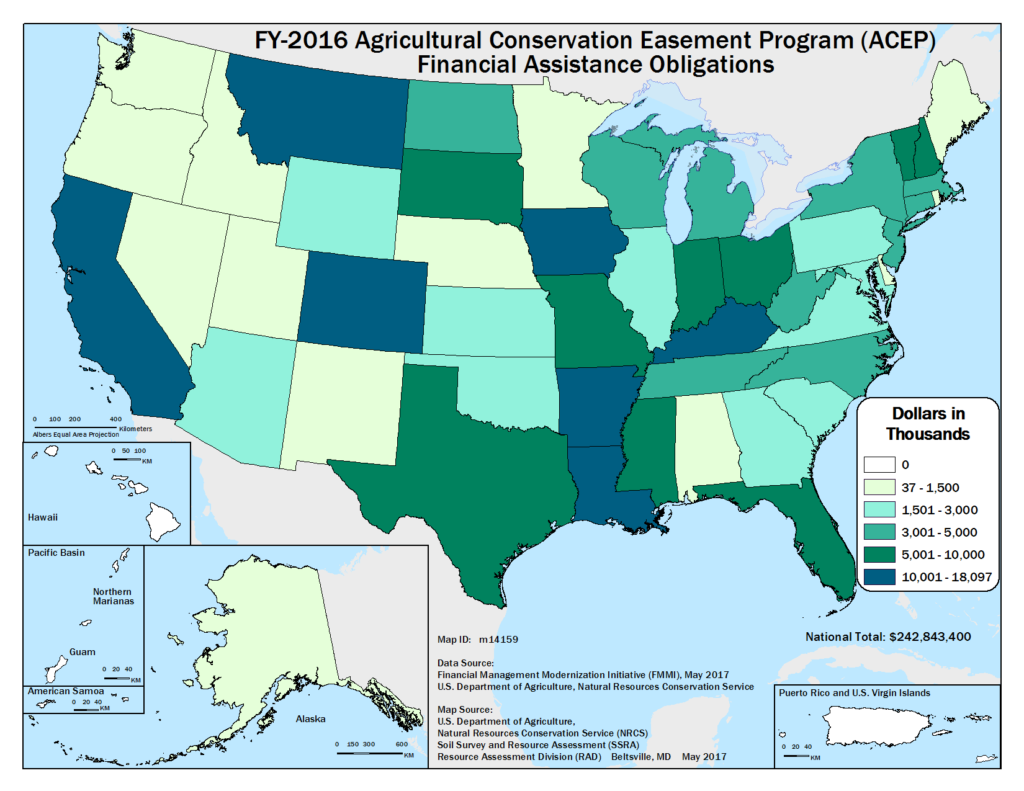
But the states getting the most dollars include Iowa and Louisiana, where farmland and wetlands in expensive, highly-developed areas are in great need of protection. Landowners in those regions need more money to conserve even very small areas, and the Farm Bill is critical to making this happen.
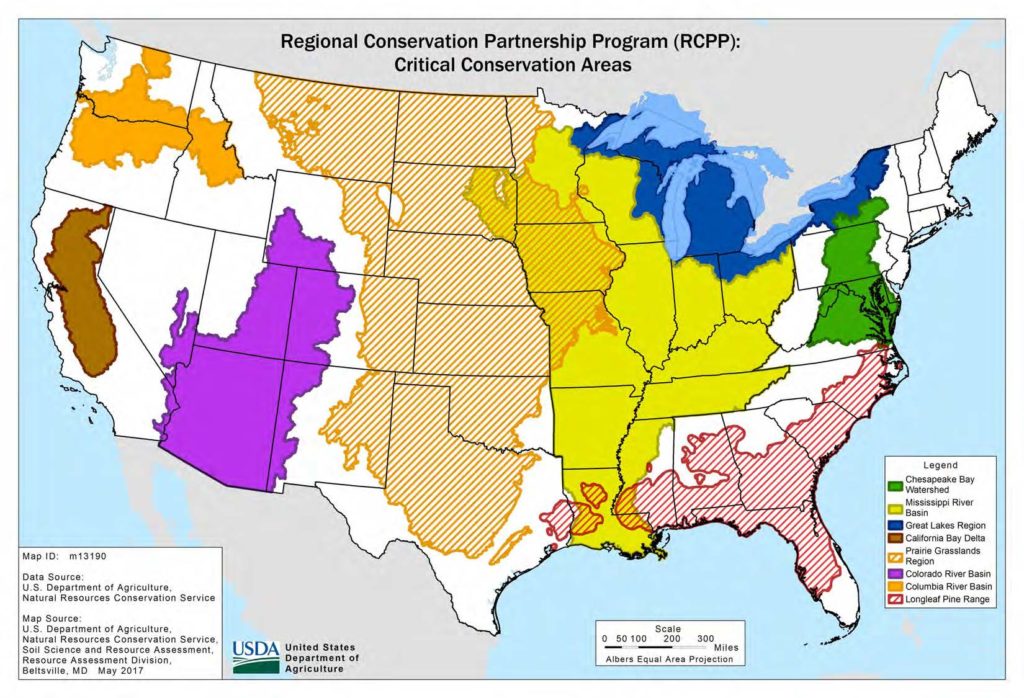
Public-private partnerships that work through the Farm Bill’s Regional Conservation Partnership Program coordinate conservation projects across landscapes, rather than incentivize a thousand random acts of conservation here and there around the country. RCPP was designed in part to focus on eight Critical Conservation Areas, which line up with areas TRCP and our partners care deeply about, including the Chesapeake Bay Watershed, Mississippi River Basin, Prairie Grasslands Region, and Colorado River Basin.
These focus landscapes encompass more of the country than you think—for example, the Chesapeake Bay Watershed stretches far outside of Maryland. (In fact, the health of the Bay’s rockfish fishery partly depends on farms in rural Pennsylvania.) RCPP helps incorporate the farthest reaches of these CCAs into more cohesive conservation plans.
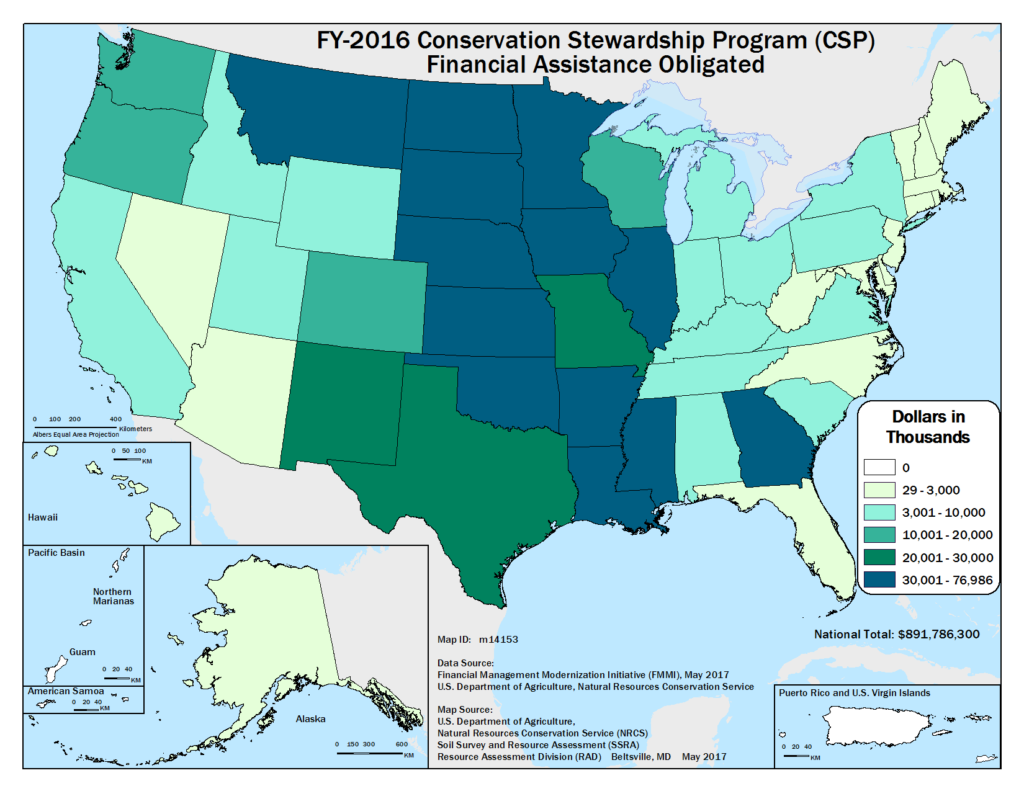
Working lands programs in the Farm Bill, like the Conservation Stewardship Program and Environmental Quality Incentives Program, provide financial assistance to landowners to improve habitat, reduce erosion, and prevent nutrient pollution on lands that are in active crop production, grazing, and forestry. CSP and EQIP were two of the best-funded conservation programs in the 2014 Farm Bill—combined they put more than $2.5 billion in projects on the ground in 2016.
CSP funding is highly targeted to the Midwest and Plains states. In fact, the pheasant capital of the U.S. in South Dakota—also home of the World’s Only Corn Palace—comes out on top at $93 million.
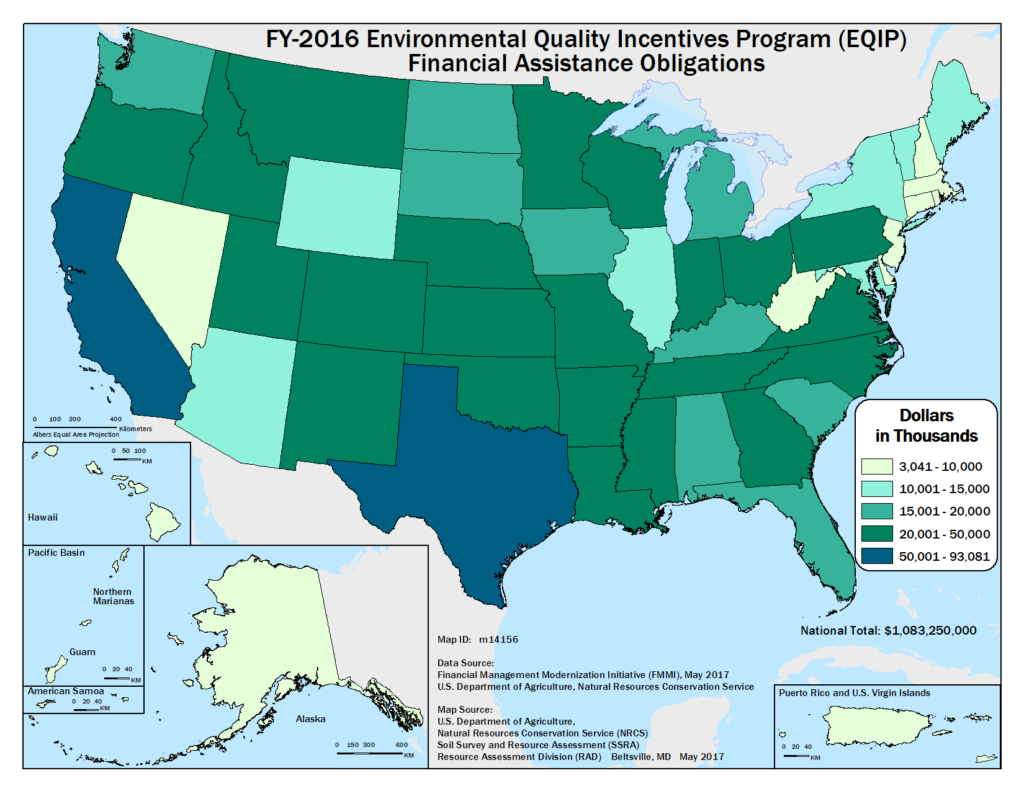
But EQIP dollars have a much more balanced distribution across the country. California and Texas take the prize for top dollar thanks to sheer size, but other sportsmen-friendly states like New Mexico and Arkansas also rank very high for number of contracts and acres. If your state is in deep green on the map, it’s a good bet that agricultural producers are working to make your waterways just as vibrant as their farms.
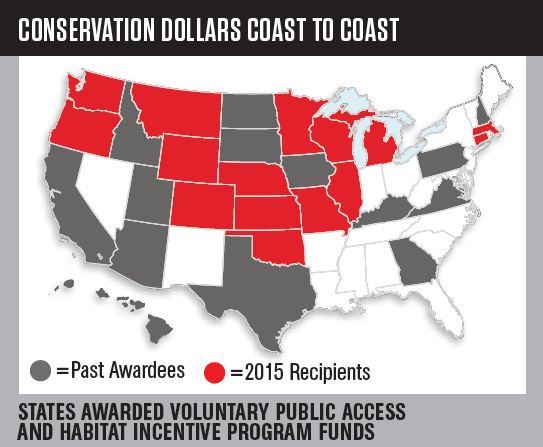
Through 2015 (the last time USDA offered up these program funds) 29 states have received grants through the Farm Bill’s Voluntary Public Access and Habitat Incentive Program to open private lands for public recreation. States like Minnesota, Kansas, Pennsylvania, and even Connecticut use VPA funds to support walk-in access in a number of ways: by paying landowners to open their lands (many open their CRP habitat to hunters), posting signs on the property and publishing the location of access points in brochures and online, improving habitat, repairing roads and fences, patrolling access points for poachers and other bad actors, and even covering the costs of liability insurance for landowners, in case a sportsman gets hurt on their property. East of the Mississippi, where some states are 99 percent privately owned, this is an essential way to ensure quality days afield.
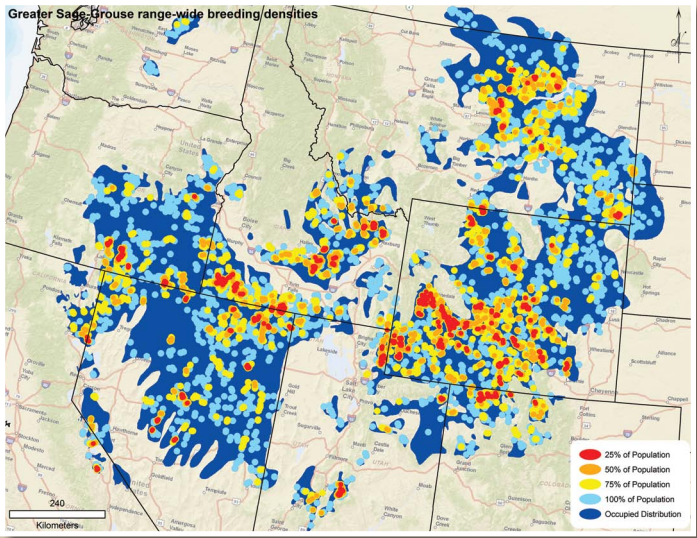
Let’s talk about Nevada for a second. You may have noticed that Nevada comes up blank or nearly blank on many of these maps. And no wonder—when we talk about Farm Bill we’re talking about the conservation of private lands. About 85 percent of Nevada is comprised of public land. This doesn’t mean there’s zero opportunity for Nevadans to benefit from the Farm Bill. In fact, with a big chunk of sage grouse core habitat in the northeast of the state, ranchers can make a real difference by marking livestock fences or participating in habitat improvements through the Sage Grouse Initiative.
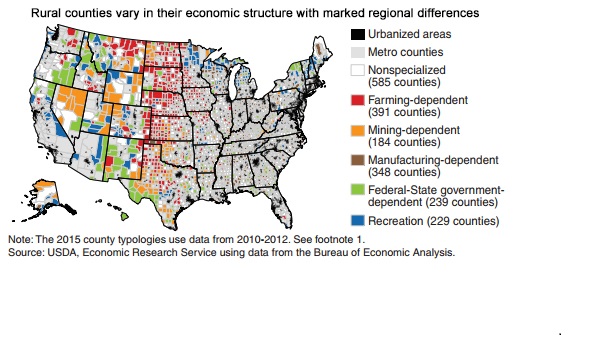
According to the USDA, 229 counties (in blue on this map)—ranging from Lake and Peninsula Borough, Alaska, to Monroe County, Florida—are economically dependent on recreation. That’s no surprise to sportsmen and women who have seen firsthand how hotels, gas stations, bars, and diners in rural and coastal areas empty out when the season’s over. This map shows a country where hunting and fishing support more jobs than the oil and gas industry. And the Farm Bill contributes to the complex conservation picture that supports this important $887-billion outdoor recreation economy.
We already know that hunters and anglers, regardless of political party, support conservation funding: 75 percent agree we should provide financial incentives to farmers and ranchers to implement habitat conservation on private lands, and 87 percent do not want to see cuts to conservation programs, in the Farm Bill or anywhere else.
These maps further show that support for Farm Bill conservation shouldn’t break along party lines or state lines. If you agree, follow us on social media as we enter the 2018 Farm Bill debate—because if Congress crosses the line and tries to cut these programs, we’re going to need your help.
Modern federal fisheries management should recognize the value of recreational fishing to local communities and conservation in America—here are three ways to do that
Frustration among anglers is at an all-time high. Overall, recreational and commercial fishing are still being treated the same, despite being fundamentally different activities that require different management approaches. Federal fisheries managers are also employing inherently imprecise data on recreational harvest in a system that requires great precision. Combined, you have a situation where it’s common for anglers to lose access and lack trust in federal fisheries managers.
But there are policy solutions, and the sportfishing, advocacy, and conservation communities continue to work with federal and state policymakers to improve saltwater recreational fishing management and ensure there are healthy stocks of forage fish and gamefish in America’s coastal waters. Here’s what we want to see.
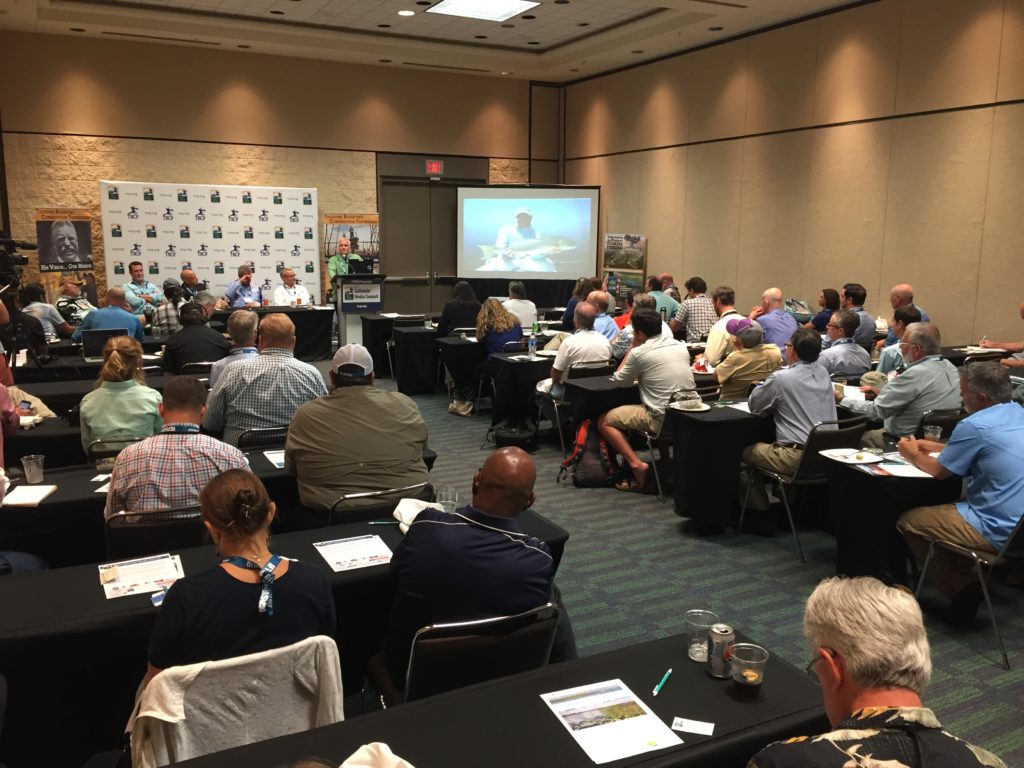
Currently, federal fisheries managers set catch limits for recreational and commercial fishing using quotas to harvest stocks up to maximum sustainable yield. While this may be an ideal management strategy for commercial fishing, where harvesting the maximum biomass is desired, it is not an effective management tool for recreational fishing, where abundance, size, and opportunity are more important. We get out on the water to catch fish for food or catch and release fish as a way to enjoy the outdoors—our motivations and tactics are different than the commercial sector.
In the past year, the recreational fishing community has explored the technical aspects of incorporating more management techniques appropriate for recreational fisheries into federal approaches, and our groups worked with decision makers to develop pieces of legislation to implement these ideas. “The Modernizing Recreational Fisheries Management Act of 2017” was introduced in the House of Representatives in April and in the Senate this week.
The bill requires an examination of allocations in mixed-use fisheries, allows for the use of alternative management approaches for recreational fishing, and requires federal managers to work more closely with state fisheries agencies and research facilities to incorporate data on fish stocks and improve angler data collection on harvest and effort.
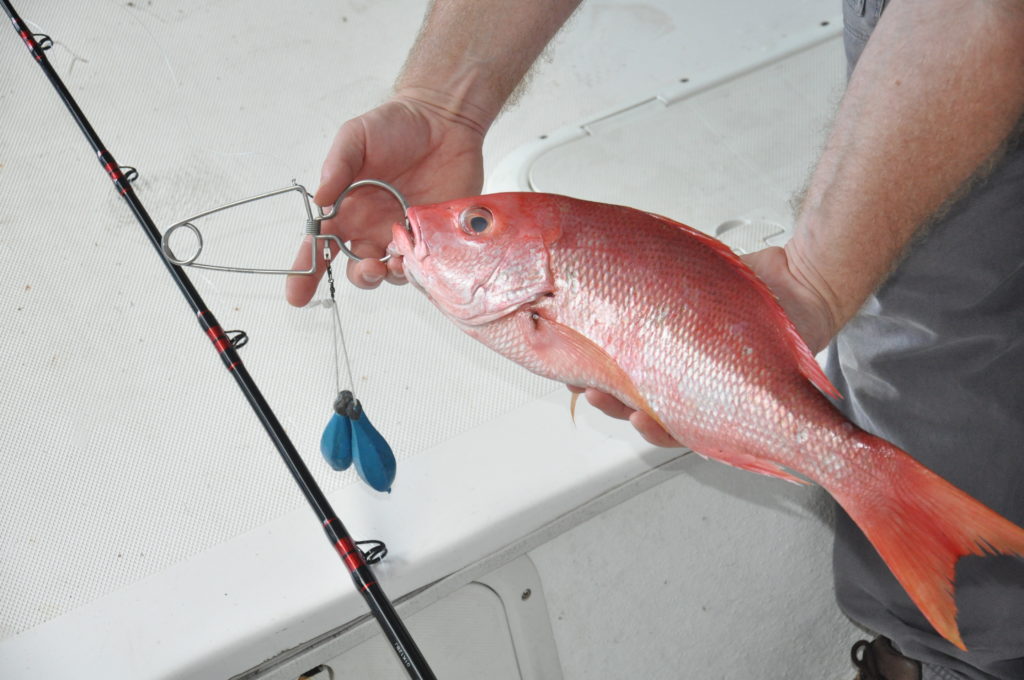
In May, state fisheries management agencies joined Gulf-region elected officials and the Department of Commerce to address the historically embattled red snapper season for federal waters, set for just three days in 2017. Gulf-state fisheries agencies traded red snapper fishing days in state waters for a 39-day red snapper season on weekends through Labor Day 2017. A high level of cooperation and coordination was needed to have all five states agree to this deal with the federal government, and the extended season has calmed anger and frustration among Gulf anglers.
However, it is a temporary fix. A long-term solution will require more cooperation, improved data collection, and continued efforts from Congress to address federal laws that manage recreational fishing based on the values of commercial fishing.
Forage fish like menhaden serve as the foundation of the food chain, supporting sportfish such as striped bass, bluefish, red drum, speckled trout, and other species enjoyed by recreational anglers. Improving forage fish management and the conservation of these stocks is critical to the health of these economically important game fish.
Currently, the Atlantic menhaden fishery is managed as a single species, but this approach fails to account for the little fish’s critical role as an essential food source. In November 2017, the Atlantic States Marine Fisheries Commission will vote on whether to transition menhaden to an ecosystem-based model, which would account for predator-prey relationships and bring forage fisheries management into the 21st century. The TRCP, ASA, and CCA are working with sportsmen and conservation groups to support this landmark decision, and sportsmen and women will have a chance to weigh in this fall.
Want to be the first to know about your opportunity to take action? Sign up for the Roosevelt Report.
Cover photo and above courtesy of Florida Fish and Wildlife Conservation Commission.
Theodore Roosevelt’s experiences hunting and fishing certainly fueled his passion for conservation, but it seems that a passion for coffee may have powered his mornings. In fact, Roosevelt’s son once said that his father’s coffee cup was “more in the nature of a bathtub.” TRCP has partnered with Afuera Coffee Co. to bring together his two loves: a strong morning brew and a dedication to conservation. With your purchase, you’ll not only enjoy waking up to the rich aroma of this bolder roast—you’ll be supporting the important work of preserving hunting and fishing opportunities for all.
$4 from each bag is donated to the TRCP, to help continue their efforts of safeguarding critical habitats, productive hunting grounds, and favorite fishing holes for future generations.
Learn More
